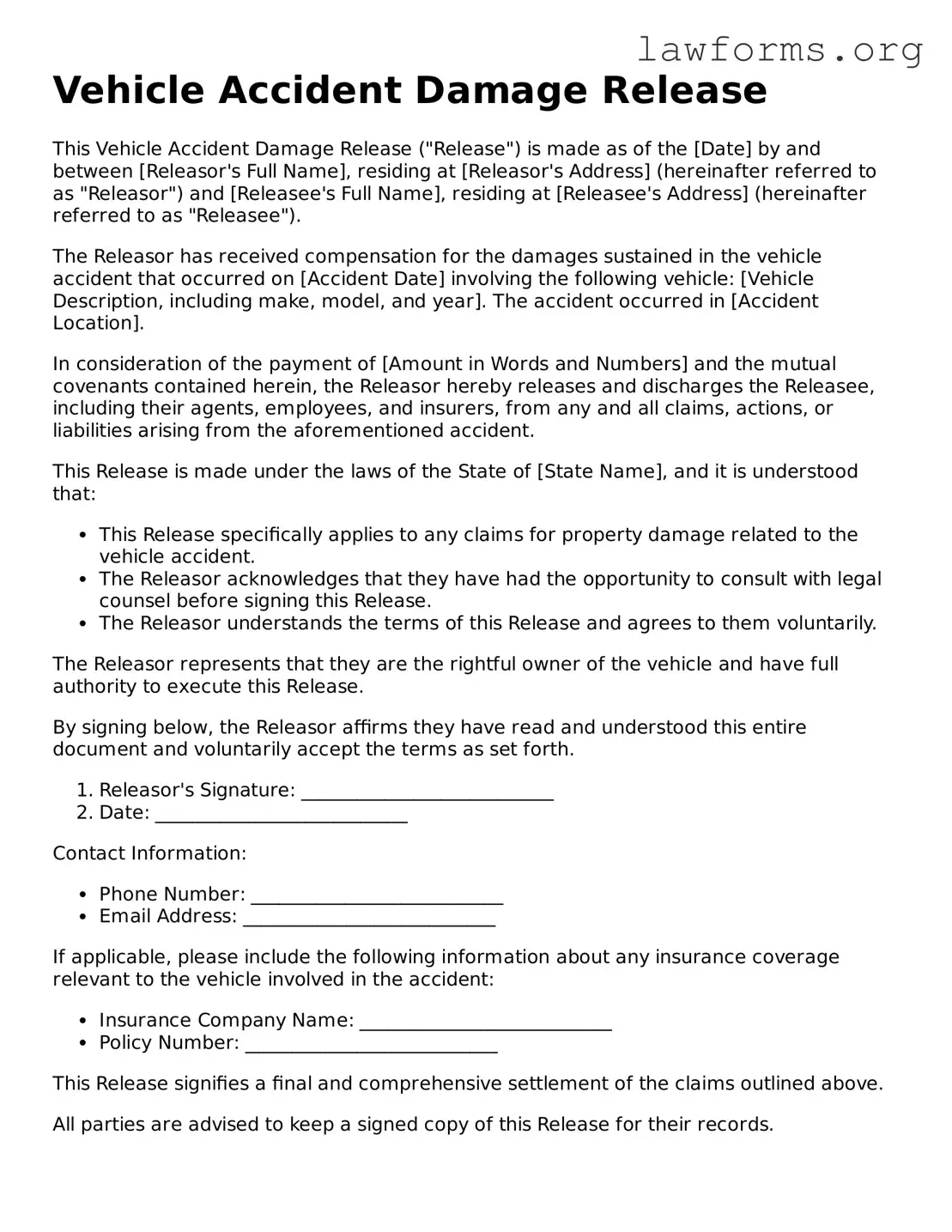Vehicle Accident Damage Release
This Vehicle Accident Damage Release ("Release") is made as of the [Date] by and between [Releasor's Full Name], residing at [Releasor's Address] (hereinafter referred to as "Releasor") and [Releasee's Full Name], residing at [Releasee's Address] (hereinafter referred to as "Releasee").
The Releasor has received compensation for the damages sustained in the vehicle accident that occurred on [Accident Date] involving the following vehicle: [Vehicle Description, including make, model, and year]. The accident occurred in [Accident Location].
In consideration of the payment of [Amount in Words and Numbers] and the mutual covenants contained herein, the Releasor hereby releases and discharges the Releasee, including their agents, employees, and insurers, from any and all claims, actions, or liabilities arising from the aforementioned accident.
This Release is made under the laws of the State of [State Name], and it is understood that:
- This Release specifically applies to any claims for property damage related to the vehicle accident.
- The Releasor acknowledges that they have had the opportunity to consult with legal counsel before signing this Release.
- The Releasor understands the terms of this Release and agrees to them voluntarily.
The Releasor represents that they are the rightful owner of the vehicle and have full authority to execute this Release.
By signing below, the Releasor affirms they have read and understood this entire document and voluntarily accept the terms as set forth.
- Releasor's Signature: ___________________________
- Date: ___________________________
Contact Information:
- Phone Number: ___________________________
- Email Address: ___________________________
If applicable, please include the following information about any insurance coverage relevant to the vehicle involved in the accident:
- Insurance Company Name: ___________________________
- Policy Number: ___________________________
This Release signifies a final and comprehensive settlement of the claims outlined above.
